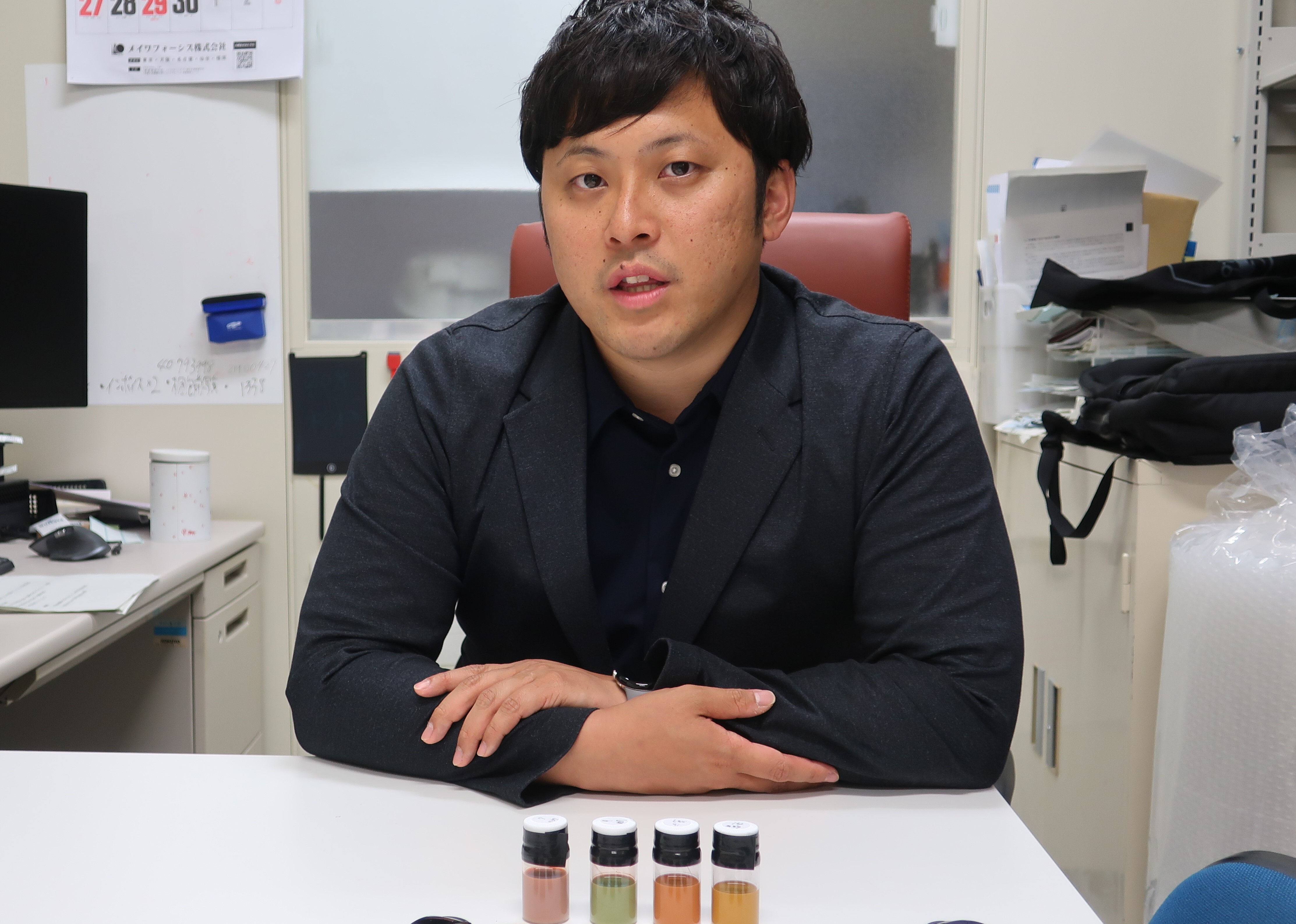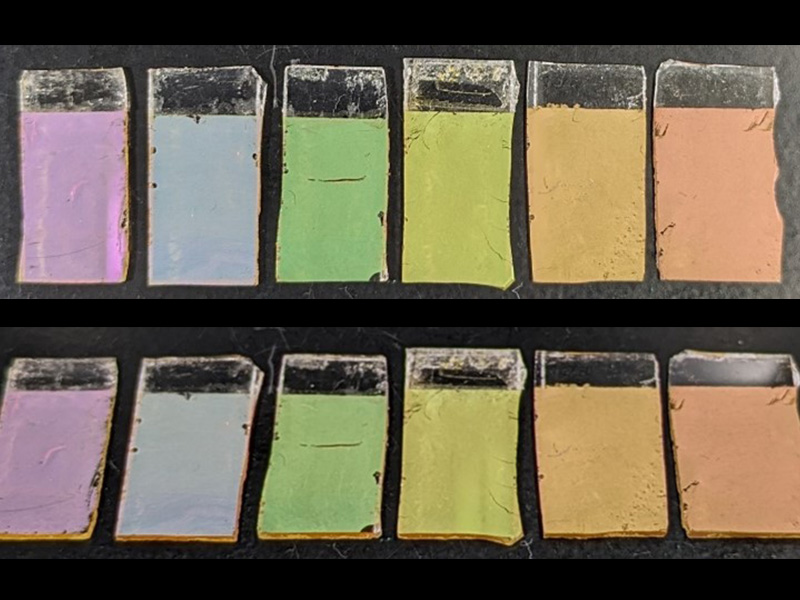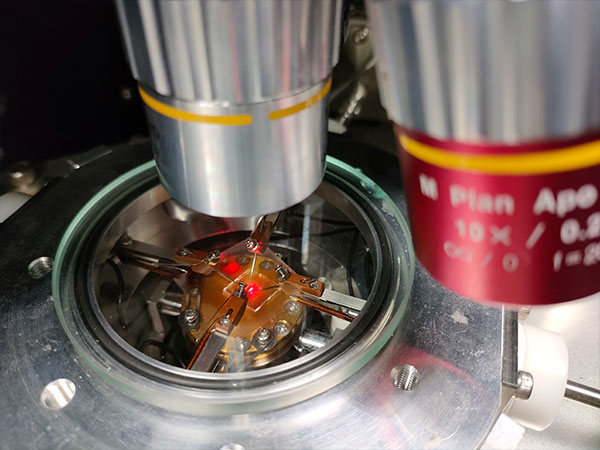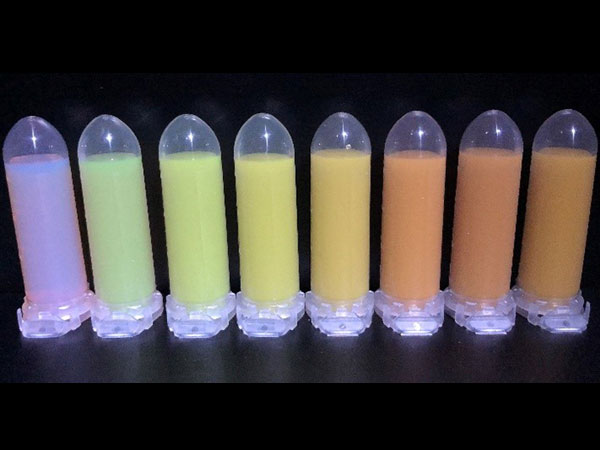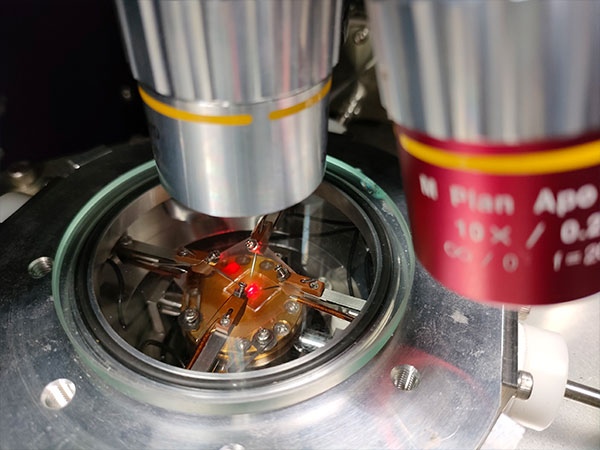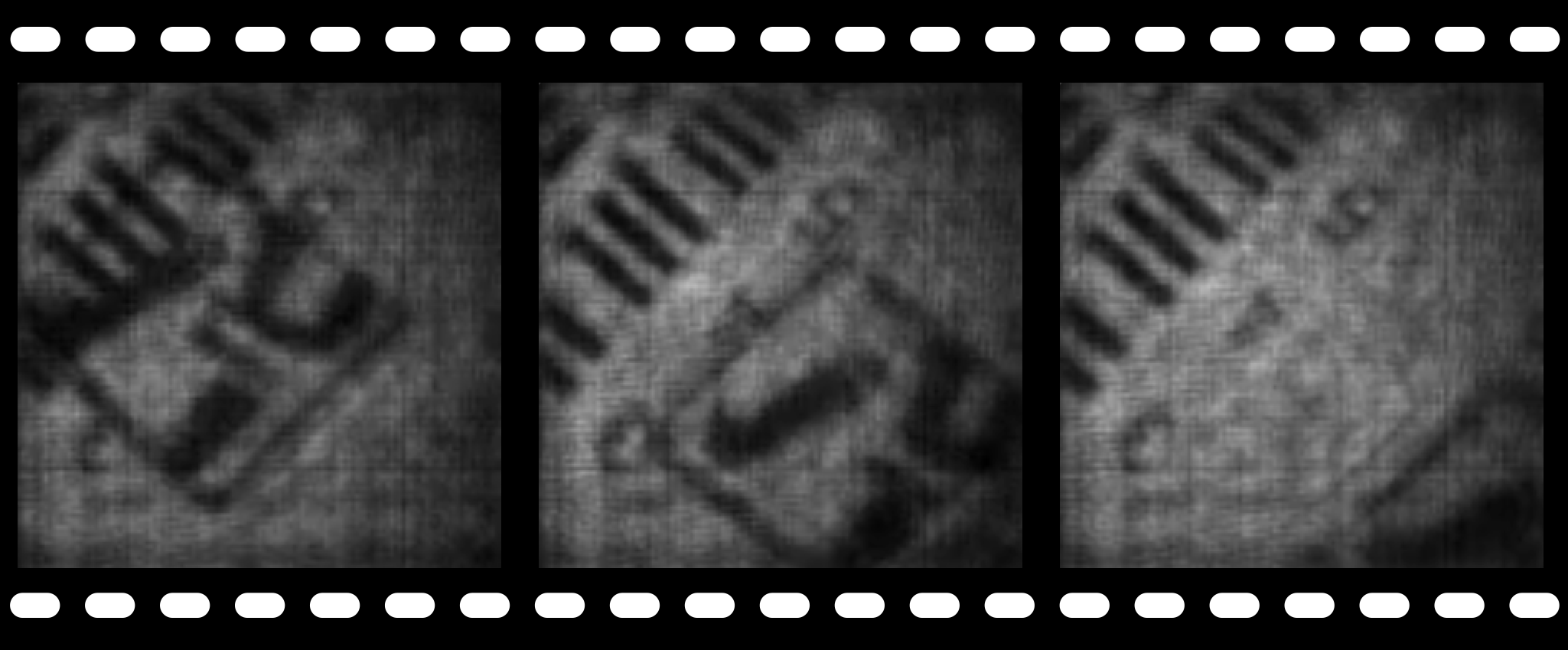Kobe University announced that a research group from its Graduate School of Engineering consisting of NEGORO Hiromasa (a masters student while conducting this research), Associate Professor SUGIMOTO Hiroshi, and Professor FUJII Minoru successfully developed a spherical nano-antenna that forms a near field of circularly polarized light.
Detecting and separating chiral molecules is crucial because their mirror-image isomers (enantiomer) exhibit different properties in living organisms. Detection methods and photochemical reactions are available that utilize the difference in optical absorption for left and right circularly polarized light (circular dichroism) in chiral molecules. However, analysis using these methods requires high sample concentrations and significant measurement times due to the minuscule difference in absorption. Methods to enhance absorption with nano-antennas that boost electromagnetic fields have garnered attention, but conventional nano-antennas have struggled to maintain circular polarization of incident light. In this study, the Kobe University research group proposed and tested a new nano-antenna that boosts electromagnetic fields and maintains circular polarization. It achieved optical resonance that maintains the circular polarization of incoming light in a wide visible spectrum range using its independently developed silicon nanoparticle colloids.
The new nano-antennas offer promising applications in highly sensitive sensing of molecular chirality and asymmetric photochemical reactions. The study was published in the international journal Nano Letters at 10:00 a.m. (EST) on May 29.
Main Points
- The research group proposed and tested a nano-antenna that uses the specific optical resonance of dielectric nanoparticles to form a near field of circularly polarized light.
- This technique bolsters the circularly polarized light-selective response of chiral molecules.
- The results of this study should provide applications in chirality analysis and asymmetric photochemical reactions for biomolecules, chemical substances, and pharmaceuticals.
Research Background
“Chirality” refers to the property of a substance that cannot be superimposed on its mirror image. Since the mirror image isomers of chiral molecules have significantly different physiological effects, there is great demand in the life science and pharmacology fields for new technologies to identify and sort mirror isomers efficiently. Detection methods and photochemical reactions are available that utilize the difference in optical absorption for left and right circularly polarized light (circular dichroism) in chiral molecules, but analysis using these existing techniques requires high sample concentrations and significant measurement times. These requirements stem from the minuscule absorption difference between left and right circularly polarized light due to the small size of chiral molecules relative to the helical pitch of such light. Increasing circular dichroism requires a technology that creates enhanced fields with circular polarization in nanoscale regions smaller than optical wavelengths. Optical chirality, a measure of the enhanced field of circular polarization, is maximized when both the electric and magnetic fields are enhanced, and the direction of handedness of the incident circular polarization (helicity) is preserved. However, conventional nano-antennas (e.g., metal nano-antennas with localized surface plasmon resonance1) resonate with the incident electric field, but their response to the incident magnetic field is minimal, blocking helicity preservation. Therefore, developing a new type of nano-antenna that resonates in both electric and magnetic fields is necessary.
Study Summary
This study focused on the Mie resonance2 of dielectric nanoparticles with a high refractive index. Mie resonances include electric and magnetic dipole resonances (Figure 1, left), and dielectric nanoparticles with low-order Mie resonances in light frequency ranges can enhance both incident electric and magnetic fields. Such nanoparticles are electromagnetically symmetric and termed “dual” nano-antennas (Figure 1, right). Dual nano-antennas enhance optical chirality with their two resonances, even though these nano-antennas have an achiral3 structure. In this case, the scattered light from the resonance preserves the incident light’s helicity (handedness of circular polarization). In this study, the research group developed a new type of nano-antenna that can both boost electromagnetic fields and maintain circular polarization using Mie resonances in the visual and near-infrared spectrums.
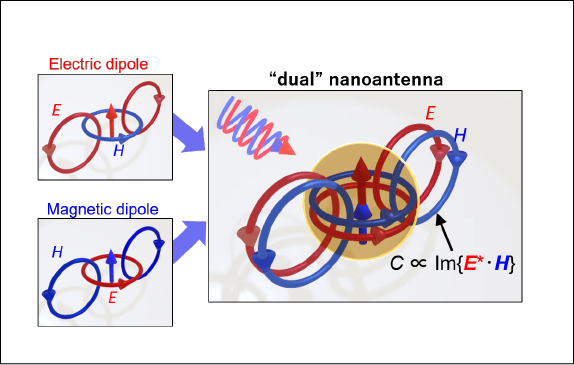
Schematic of electric dipole, magnetic dipole and "dual" nanoantenna, Credit: SUGIMITO Hiroshi, Usage Restrictions: None
First, the researchers calculated the helicity density of optical resonance in silicon nanoparticles based on the Mie theory. They demonstrated that these particles preserve the helicity of incident circularly polarized light under Kerker conditions4—equal intensity and phase in the electric and magnetic dipole resonances—forming a near field of circularly polarized light. To demonstrate this property, the research group used a colloidal solution of crystalline silicon nanoparticles that they developed independently. Figure 2(a) shows a photograph of colloidal solutions of differently sized silicon nanoparticles. Suppressing the size distribution to less than 5% results in vivid scattering coloration. The team constructed a setup to accurately measure the right- and left-handed circularly polarized components of the scattered light when the nanoparticles are irradiated with clockwise circularly polarized light, obtaining the helicity density spectrum. Particles without this “dual” resonance (e.g., gold nanoparticles) exhibit changes in the scattered light polarization, as shown in Figure 2(b), and do not preserve the incident light helicity. The helicity density is nearly zero in both experiments and calculations, as shown in Figure 2(c). Meanwhile, “dual” nanoparticles satisfying the Kerker conditions preserve the scattered light helicity of the incident circularly polarized light (Figure 2(d)). The colloidal solution of silicon nanoparticles shown in Figure 2(e) allows the helicity density to reach a theoretical value of 0.96 and an experimental value of 0.7 at a wavelength of around 680 nm. This result indicates the formation of a circularly polarized near field on the nanoparticle surface. The research group has performed similar measurements on silicon nanoparticles with average diameters ranging from 114 to 179 nm and demonstrated that helicity conservation of incident circularly polarized light is possible in wavelengths of 550 to 750 nm.
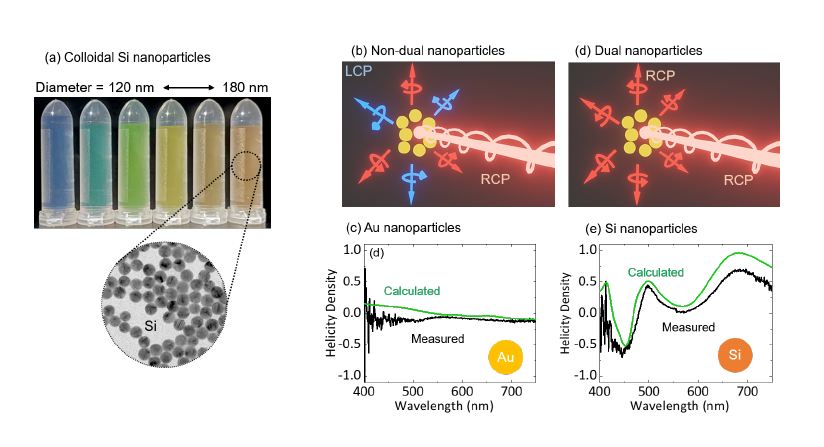
(a) Photographs of colloidal Si nanoparticles in water with different diameters. (b, d) Schematics of scattering of circularly polarized light in "non-dual" (b) and "dual" (d) nanoparticles. (c, e) Calculated and measured helicity density spectra of Au (c) and Si (e) nanoparticles., Credit: Reprinted with permission from Nano Letters, 2023, DOI: 10.1021/acs.nanolett.3c01026., Usage Restrictions: Attribution required.
Future Developments
Near fields of circularly polarized light enhance the interaction between light and chiral molecules. This effect improves the circular dichroism of chiral molecules, enabling highly sensitive detection and analysis and increasing the efficiency of asymmetric photochemical reactions, with potential applications in the pharmaceutical field. Moreover, the developed nanoparticle solution has potential as a new liquid for controlling light polarization.
Glossary
1 Mie resonance
The phenomenon of resonant scattering found in dielectrics with a high refractive index seen in light wavelength-sized spherical particles, whose exact solution was derived by Gustav Mie in 1908. Mie resonance combines electrical and magnetic resonances in response to incident electric and magnetic fields. The particle size can control the resonance wavelength.
2 Localized surface plasmon resonance
An optical resonance phenomenon caused by metallic nanostructures, originating from the collective oscillation of free electrons in the metal. Electrical resonance occurs primarily in response to the incident electric field.
3 Achiral
Having the property of being able to superimpose a substance on its mirror image, as opposed to the property of chirality in which a substance cannot be superimposed on its mirror image.
4 Kerker conditions
The wavelength conditions in which the magnitude and phase of the dipole moment of electric and magnetic dipole resonances coincide.
Acknowledgements
This research was supported by the Japan Science and Technology Agency (JST) through its Fusion Oriented Research for Disruptive Science and Technology (FOREST) Program (JPMJFR213L) (principal investigator: SUGIMOTO Hiroshi) and by the Japan Society for the Promotion of Science (JSPS) Grant-in-Aid for Challenging Exploratory Research (22K18949) (principal investigator: FUJII Minoru).
Publication Data
Title
DOI
10.1021/acs.nanolett.3c01026
Authors
NEGORO Hidemasa, SUGIMOTO Hiroshi, FUJII Minoru
Publication
Nano Letters






